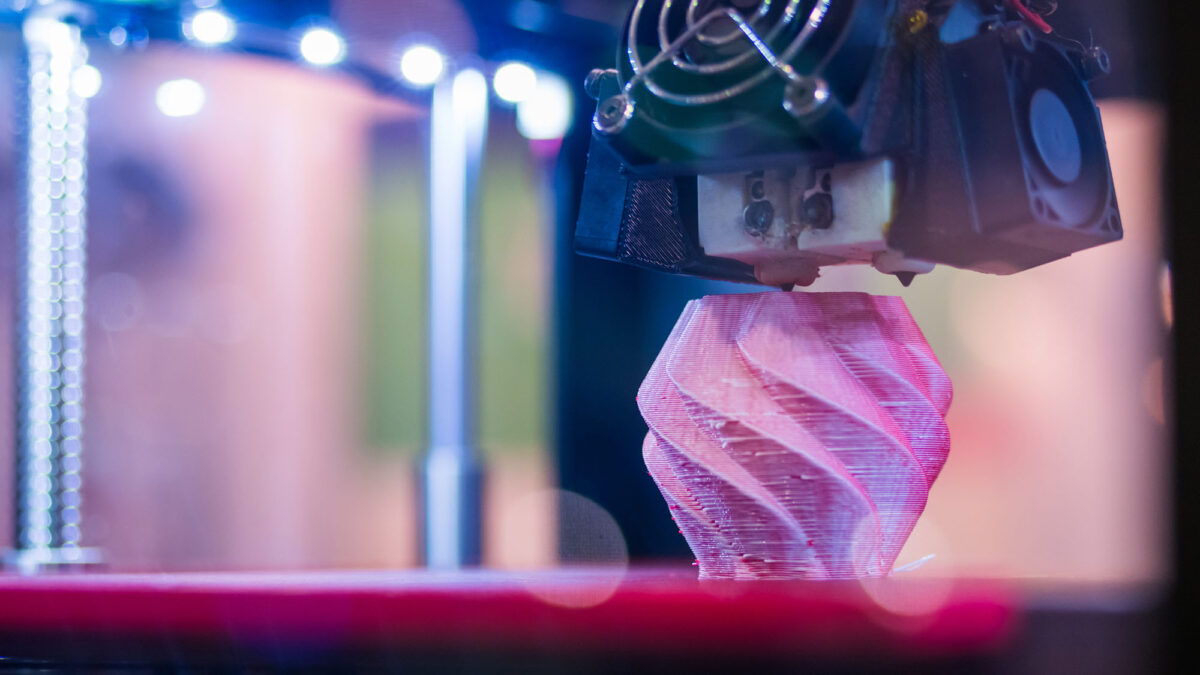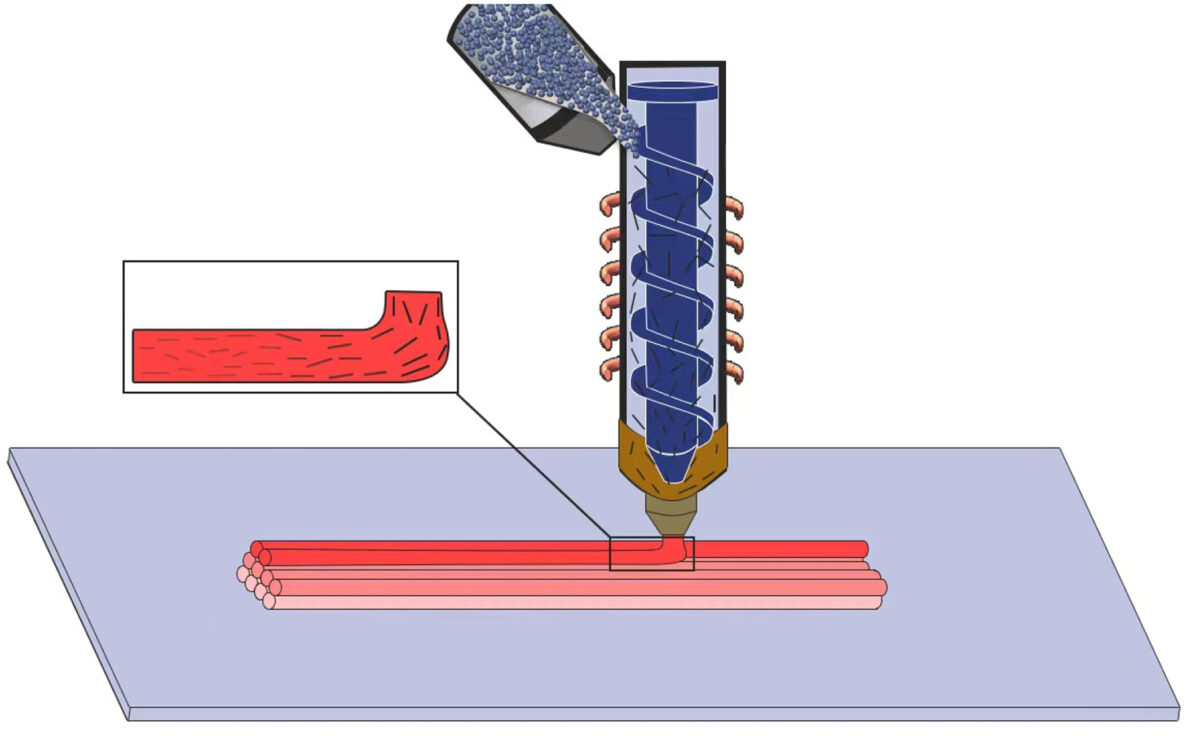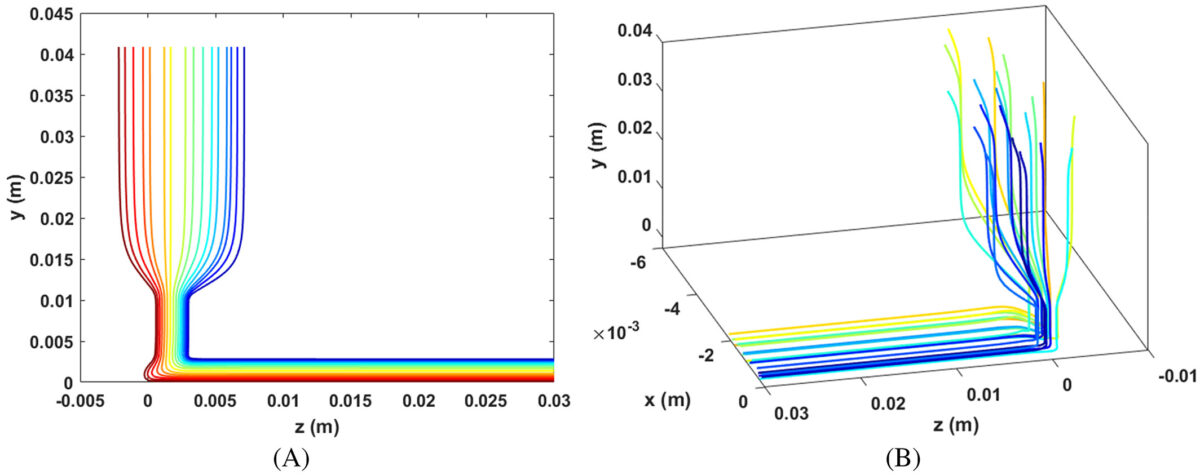3D Flow Model Predicts Fiber Orientation for Large-area Additive Manufacturing

Editor’s choice from SPE Journal Polymer Composites for October 2023 addresses a three-dimensional polymer composite flow simulation and associated fiber orientation prediction for Large-area extrusion deposition Additive Manufacturing (LAAM).
2D flow models have been handy for gaining knowledge about the material anisotropy of the deposited composite parts. Still, assumptions cause the loss of significant characters in the deposition flow.
Zhaogui Wang, Chenjun Luo, Zhongqi Xie, and Zhenyu Fang employ a 3D flow model that focuses on the quasi-steady state of the polymer composite melt flow within the nozzle and the subsequent 90-degree turning deposition onto the material substrate.
The extrudate swell of the free surface, furthermore, is predicted using the improved elastic re-meshing method provided in ANSYS-Polyflow. It is an efficient and computationally powerful re-meshing algorithm for free surface predictions of 3D extrusion flows.
Comparison of fiber orientation results computed by 3D flow versus 2D flow
The 3D flow model presents advantages over the 2D-planar flow model:
- The extrudate swell of the deposited bead is the first feature showing the difference between the simplified 2D planar and 3D flow models.
- The 3D flow model presents the important shear rate variations within the nozzle flow.
- The 3D flow model predicted the fiber alignment pattern more accurately, compared to the 2D simplified model. Thus, it helps improve the material properties estimations of the produced composites.
- The result of the 3D model simulation corresponds to experimental data more than the 2D model simulation.
Effects on processing conditions
Additionally, a parametric study was performed with the constructed 3D flow and fiber analysis formulation to understand the impact on process parameters.
Among these, the ratio of extrusion-to-deposition ratio exhibits the most significant impact. As an increased deposition rate increases, the fiber alignment along the direction of the deposition.
Contribution
Therefore, the simulation-based methodology provides an effective means for both designers and manufacturers to simulate the mechanical properties of the entire product manufactured with LAAM without the burden of time-consuming experiments.
Read the full article from our SPE Journal Polymer Composites.


